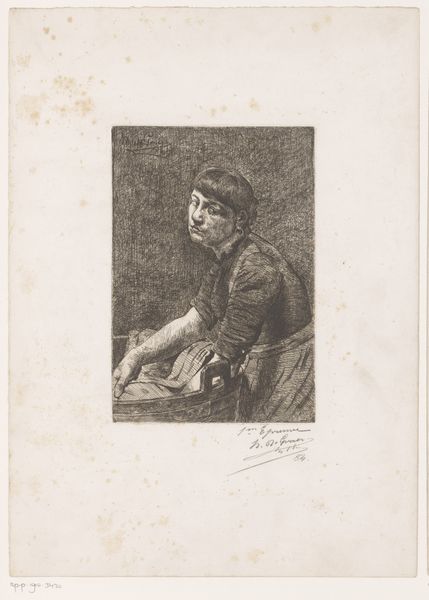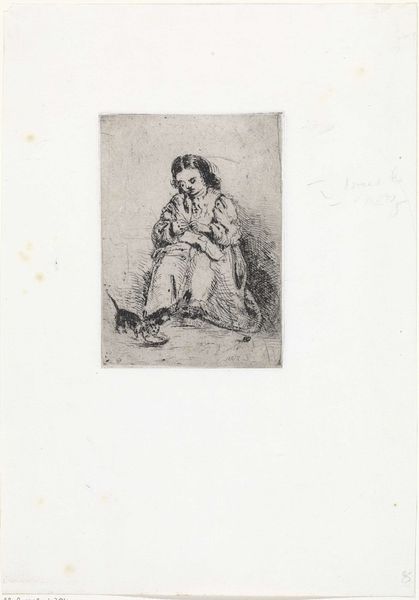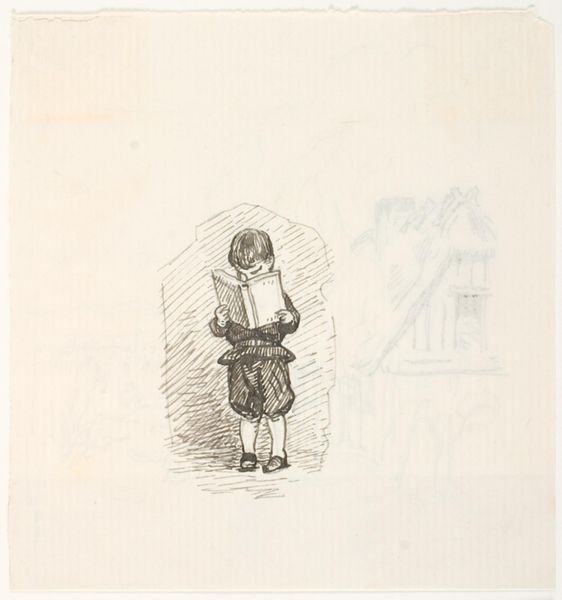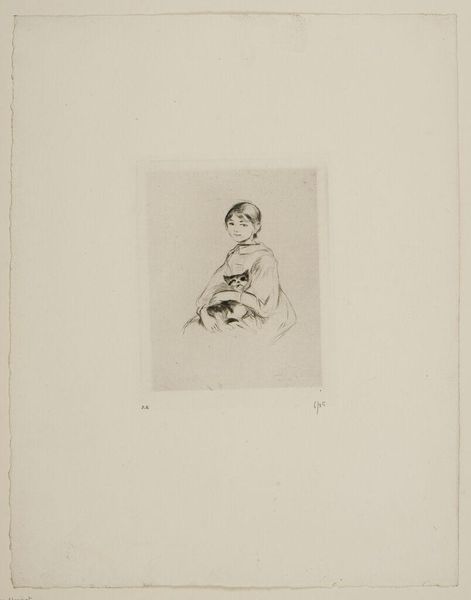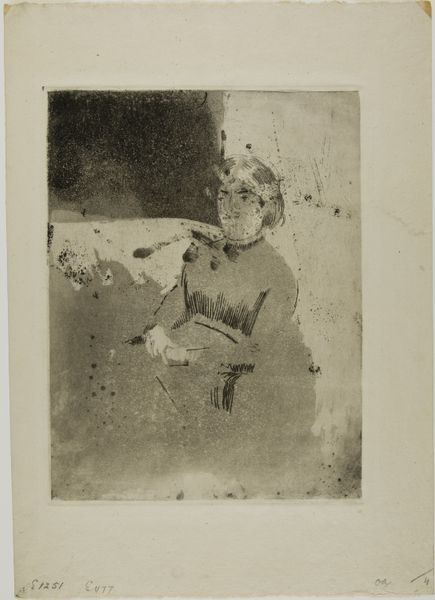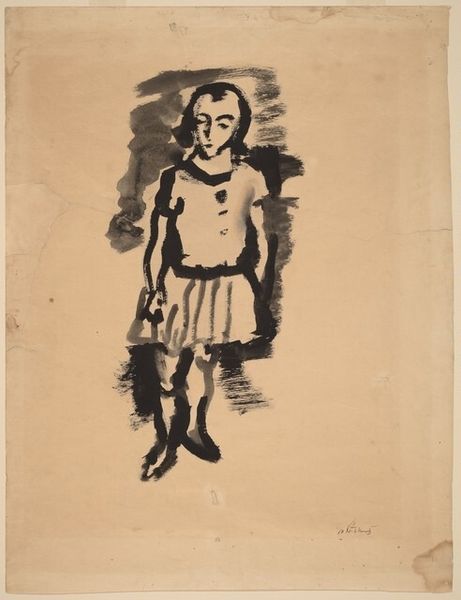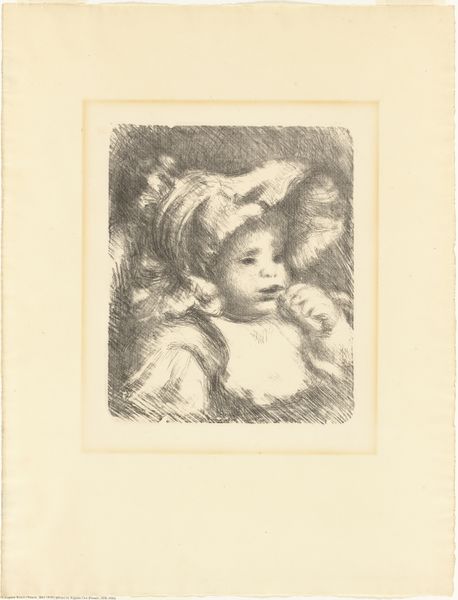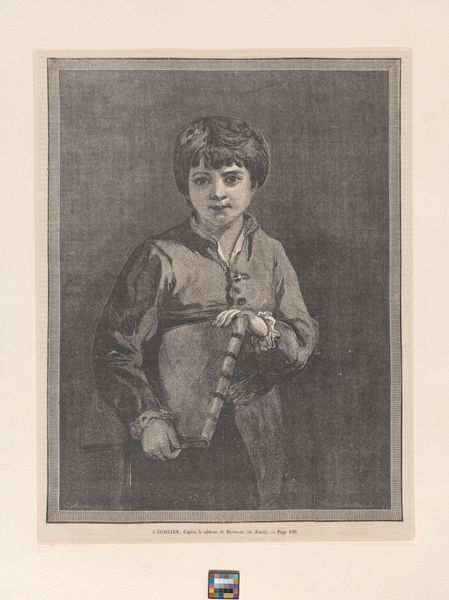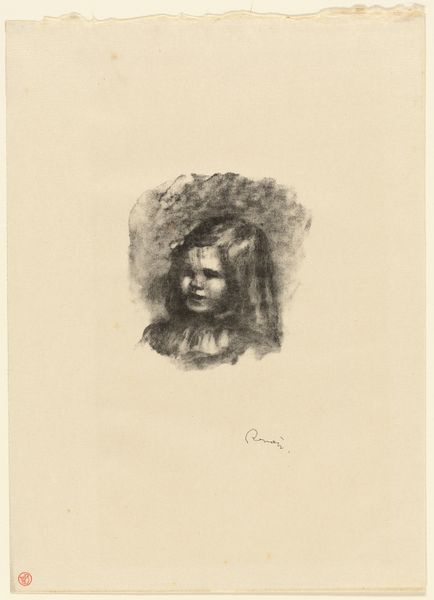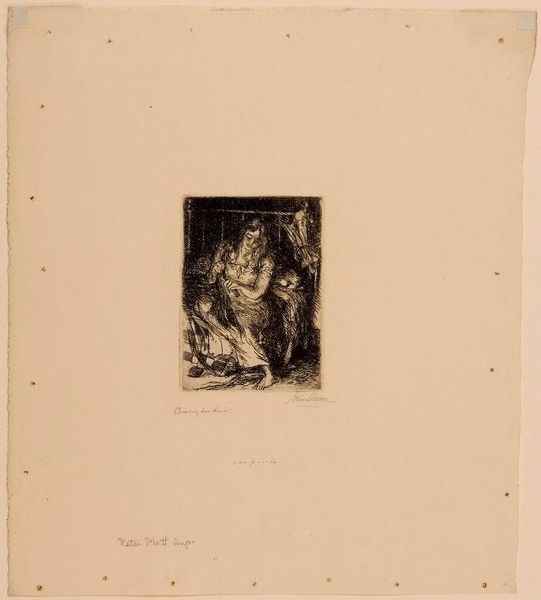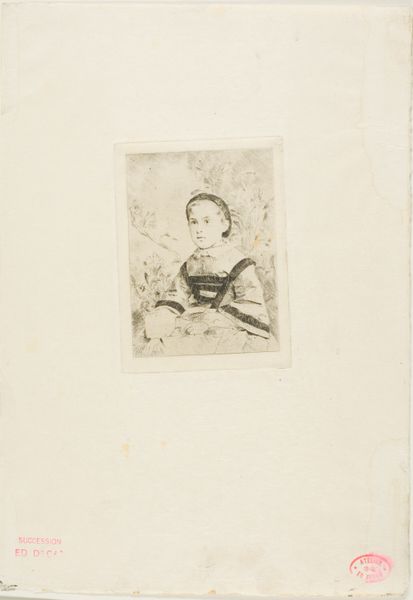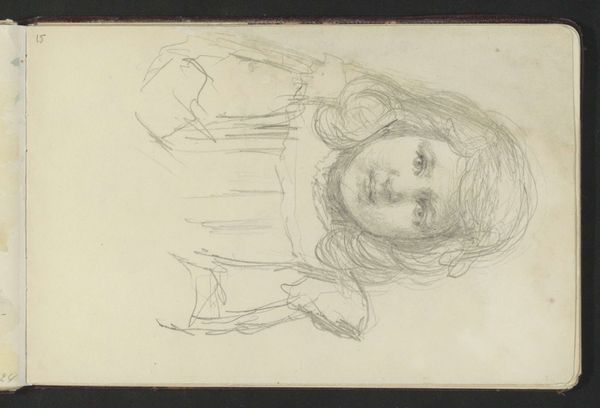
drawing, print, etching
#
portrait
#
drawing
# print
#
etching
#
figuration
Dimensions: height 141 mm, width 96 mm
Copyright: Rijks Museum: Open Domain
Curator: This is Arnoud Schaepkens' "Young Girl with Dog", likely created sometime between 1831 and 1904. It's an etching, a type of printmaking. Editor: It’s rather haunting, isn’t it? The starkness of the etching creates this strange solemn mood. And those eyes! They’re so direct. Curator: The process of etching itself lends to that austerity. Think about it: the artist carefully scratches into a waxed metal plate, then immerses it in acid. It’s an industrial process almost, far removed from a spontaneous brushstroke. How does that affect our understanding of the work as a portrayal of innocence? Editor: It’s fascinating how he uses the medium to convey form. Look at the lines; some are deeply etched and densely packed to suggest shadow, others are faint and widely spaced, giving the impression of light. The tonality relies heavily on contrasts and juxtapositions. Curator: And that contrast can be connected to the subject, I believe. The girl stands between domesticity – symbolized by her apron and small dog – and the world outside. Who was she? What labor was she already undertaking, if any, at that age? How did societal pressures of gender shape her self-perception even as a child? These aren't mere visual arrangements; they are social documents. Editor: Perhaps, but let's not overlook the formal components that make it affecting regardless of her specific circumstances. See how the diamond composition anchors the figure but lets your eye wander, drawn to specific aspects of light and form, making for an interesting image. The dog is such a minor character yet grounds the etching to a relatable setting. Curator: I would say that every compositional choice reinforces certain historical and societal realities that otherwise might have been overlooked by us now. For instance, dogs were not considered pets to be adored as often; they aided with different types of work depending on where someone lived. What do we see and not see through this class, gender and location filter? Editor: Perhaps it's precisely that open-endedness of an etching that allows many of these discussions to emerge. Curator: Absolutely. By considering both process and formal aspects, we create fuller access points to its cultural framework and its potential meaning today.
Comments
No comments
Be the first to comment and join the conversation on the ultimate creative platform.
